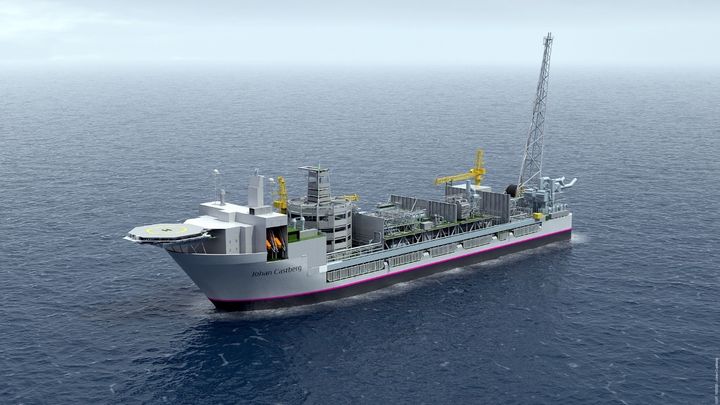
Illustration of Johan Castberg FPSO
Last week Statoil and its partners decided to develop the Castberg oil field in the Barents Sea in the High North. Huge investments will be required.
To me, this is a clear sign of new optimism in the oil and gas sector, Norway’s most important industry.
With a production of two million barrels of oil per day, Norway is Europe’s largest oil producer. It is also the world’s third-largest exporter of natural gas, supplying almost 25 percent of EU's consumption.
This is an important contribution to energy security for the United States’ most important allies.
I am happy to see that there is a great interest in the United States for Norway as an energy producer. In 2017 we have had several U.S. delegations visiting Norway to talk about energy issues. I had the pleasure to accompanying Secretary Zinke and a delegation of senators from the Energy and Natural Resources Committee, headed by Senator Murkowski, on a visit in May.
After the downturn in the oil and gas industry these past couple of years, investments have declined, companies have had to lay off employees, and the government’s income from the sector has been reduced.
This has, no doubt, been hard times for the industry, for the people involved, and for regions where oil and gas is an important business. Now the tide seems to be turning.
Why this change?
The higher global oil prices is of course an important factor. However, until a few years ago projects were not profitable even at oil prices over 100 dollars per barrel.
In my view, the main reason for optimism now comes from the good work the industry has laid down in reducing cost, increasing efficiency and use of new technology and solutions. I would say that this comes down to the competence of the people working in the Norwegian oil and gas industry and their ability to adjust to a changing market.
Now we see successful results from these efforts.
Today, new oil and gas discoveries in Norway can be developed with oil prices well below 40 dollars per barrel. For the planned development of the Castberg oil field, the companies have brought costs down from 80 dollars per barrel to less than 35 dollars.
And Castberg, our northernmost field, is not the only new project: A total 10 field developments are expected to move forward this year.
In other words: There are great opportunities for oil and gas activities in Norway.

Map of Norway and areas open to oil and gas activities (in green).
So far less than half of the oil and gas resources on the Norwegian continental shelf have been produced. To explore and develop the remaining potential, it is vital that the oil and gas industry has access to prospective areas.
The interest is strong. We have seen a high and stable number of awarded licenses over the past five years. This has happened even in spite of lower oil prices and cost efficiency programs.
This year, a record number of applications were submitted for Awards in Predefined Areas, the annual licensing rounds in areas close to producing fields. The high number of awards illustrate the competitiveness of the Norwegian sector.
With strict safety and environmental regulations, including regulation of greenhouse gas emissions and a carbon tax, Norwegian petroleum activity has on average significantly lower emissions than the world average. The carbon tax is also the main reason we now have two operational projects with Carbon Capture and Storage (CCS) in the oil and gas sector.
A strong resource base and a world class oil and gas industry give Norway a solid foundation for being a long-term reliable oil and gas exporter to Europe and the global markets.
And as such: contribute to global energy security, of importance for all our allies.
